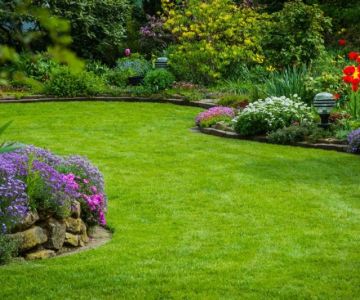
- 1. Introduction: Why Ornamental Vines for Arbors and Trellises?
- 2. Types of Ornamental Vines for Arbors and Trellises
- 3. How to Plant Ornamental Vines for Arbors and Trellises
- 4. Maintenance Tips for Ornamental Vines
- 5. Popular Ornamental Vines to Consider
1. Introduction: Why Ornamental Vines for Arbors and Trellises?
Ornamental vines are a fantastic way to add natural beauty and elegance to your garden. Whether you're looking to create a shady retreat under an arbor or cover a trellis with lush greenery and flowers, ornamental vines offer a unique solution. Their climbing nature makes them perfect for vertical spaces, adding dimension and a sense of coziness to your outdoor areas.
Not only do these vines provide aesthetic appeal, but they also have functional benefits, such as providing privacy, reducing noise, and creating windbreaks. This article will guide you through how to grow ornamental vines for arbors and trellises, from choosing the best varieties to planting and maintaining them for optimal growth.
2. Types of Ornamental Vines for Arbors and Trellises
When choosing ornamental vines for your garden, it's essential to select the right variety based on your climate, the look you're going for, and how much maintenance you're willing to do. Here are some popular types of ornamental vines that are perfect for arbors and trellises:

Robb Brinkmann Construction, Inc.
OconomowocWaukesha CountyWisconsin
2215 N Dousman Rd, Oconomowoc, WI 53066, USA
Climbing Roses
Climbing roses are a classic choice for arbors and trellises. With their romantic, fragrant blooms and diverse color options, they provide a timeless look for any garden. They thrive in sunny locations and can be trained to grow along supports, creating a beautiful floral canopy.
Clematis
Clematis is known for its stunning flowers, which come in a range of vibrant colors, including purple, pink, red, and white. These climbing plants are perfect for trellises and arbors, offering long-lasting blooms during the growing season. Clematis vines do best with proper support and well-drained soil.
Wisteria
If you want a dramatic display, wisteria is an excellent choice. Known for its long clusters of purple or white flowers, this fast-growing vine can quickly cover a large structure like an arbor or trellis. However, wisteria requires plenty of sunlight and sturdy support due to its vigorous growth habit.
Sweet Peas
For a more delicate and fragrant option, sweet peas are perfect for a trellis. These vines produce colorful, sweet-smelling flowers in shades of pink, white, and purple. While they are annuals, they grow quickly and provide a burst of color throughout the growing season.
Virginia Creeper
Virginia creeper is a fast-growing vine that offers lush green foliage, turning brilliant red in the fall. This vine is perfect for covering trellises or arbors and thrives in a variety of climates. However, it can be aggressive, so it’s important to control its growth to prevent it from taking over the garden.
3. How to Plant Ornamental Vines for Arbors and Trellises
Planting ornamental vines is relatively simple, but it requires some planning to ensure that your vines grow successfully and thrive on your arbors and trellises. Here are some steps to follow when planting ornamental vines:
1. Choose the Right Location
Before planting your vines, choose a location with sufficient sunlight. Most ornamental vines need at least six hours of direct sunlight per day to grow well, though some varieties (like sweet peas and clematis) can tolerate partial shade. Ensure that the area around the arbor or trellis has well-draining soil and enough space for the vines to grow.
2. Prepare the Soil
Good soil is essential for healthy vine growth. Improve the soil by mixing in organic matter like compost or peat moss. This helps retain moisture while also promoting healthy root development. You may also want to test the soil’s pH to ensure it’s within the preferred range for your chosen vine species (generally 6.0 to 7.0).
3. Install the Support Structure
Before planting your vines, make sure that the trellis or arbor is sturdy and tall enough to support the mature size of the vine. Secure the trellis or arbor firmly into the ground, ensuring it can withstand the weight of the vine as it grows. Keep in mind that some vines, like wisteria, require stronger structures due to their heavy weight and fast growth rate.
4. Plant the Vines
Dig a hole large enough to accommodate the root system of your vine. Place the vine in the hole, ensuring that the top of the root ball is level with the soil surface. Backfill the hole with soil, gently pressing it down to eliminate air pockets. Water thoroughly to settle the soil around the roots.
5. Mulch and Water
Apply a layer of mulch around the base of the vine to retain moisture and suppress weeds. Water the vine deeply after planting and continue to water regularly throughout the growing season, ensuring the soil stays moist but not waterlogged. Be cautious with over-watering, as this can lead to root rot.
4. Maintenance Tips for Ornamental Vines
Maintaining your ornamental vines is crucial to keeping them healthy and ensuring they continue to thrive year after year. Here are some essential maintenance tips:
Pruning
Regular pruning is essential for most ornamental vines, especially to keep them under control and encourage better airflow. Prune dead or damaged stems and encourage new growth by cutting back the plant after flowering. Be sure to follow specific pruning guidelines for each vine species.
Fertilizing
Fertilizing your vines annually helps provide the necessary nutrients for healthy growth. Use a balanced, slow-release fertilizer to promote strong root development and vibrant blooms. Be cautious not to over-fertilize, as this can lead to excessive foliage growth with fewer flowers.
Supporting Growth
As your vines grow, guide them along the support structure by tying them loosely with soft garden ties. This will help them grow in the desired direction and prevent them from becoming tangled or over-stretching the support. Keep an eye on the vines as they grow and adjust the supports as needed to ensure they have the room to thrive.
5. Popular Ornamental Vines to Consider
To inspire your next gardening project, here are a few more popular ornamental vines that will thrive on your arbors and trellises:
- Jasmine: Known for its fragrant white or yellow flowers, jasmine is an excellent choice for a fragrant vine.
- Hops: A fast-growing vine that produces beautiful green leaves and hop cones, perfect for creating a rustic or garden-inspired atmosphere.
- Passionflower: With exotic-looking flowers and fruit, passionflower vines add unique visual interest to your space.
- Climbing Hydrangea: A slow-growing vine that produces large, beautiful white flowers, ideal for shaded areas.
Whether you're creating a lush, green garden escape or enhancing the beauty of your backyard with vibrant blooms, ornamental vines can transform your space. Visit Beautiful Landscapes for expert advice on selecting and caring for the best vines for arbors and trellises in your garden.








 GTO Landscaping & Snow Removal, LLC4.0 (4 reviews)
GTO Landscaping & Snow Removal, LLC4.0 (4 reviews) Landscaping Pro LLC4.0 (54 reviews)
Landscaping Pro LLC4.0 (54 reviews) Smart Contractors, Inc4.0 (7 reviews)
Smart Contractors, Inc4.0 (7 reviews) Artistic Landscapes5.0 (1 reviews)
Artistic Landscapes5.0 (1 reviews) Caden's Mowing Co5.0 (15 reviews)
Caden's Mowing Co5.0 (15 reviews) Ground Control Solutions5.0 (4 reviews)
Ground Control Solutions5.0 (4 reviews) How to Grow a Herb Garden in Your Landscape: A Step-by-Step Guide
How to Grow a Herb Garden in Your Landscape: A Step-by-Step Guide How to Convert a Lawn Into a Wildflower Meadow
How to Convert a Lawn Into a Wildflower Meadow How to Build a Wildlife Habitat Garden That Supports Biodiversity
How to Build a Wildlife Habitat Garden That Supports Biodiversity How to Choose Plants That Don’t Compete: A Guide for Perfect Landscaping
How to Choose Plants That Don’t Compete: A Guide for Perfect Landscaping How to Revive a Neglected Lawn Step by Step
How to Revive a Neglected Lawn Step by Step How to Manage Weeds Organically Without Chemicals
How to Manage Weeds Organically Without Chemicals